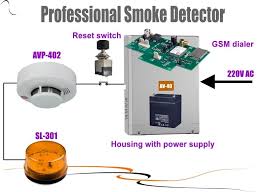Attendance Fingerprint Technology: Enhancing Workforce Management
In today’s fast-paced business environment, efficient and accurate employee attendance tracking is crucial for organizations of all sizes. Traditional methods such as manual timesheets or punch cards are prone to errors and can be easily manipulated. This is where attendance fingerprint technology comes into play, offering a secure and reliable solution for workforce management.
Attendance fingerprint technology utilizes biometric data to record employees’ clock-in and clock-out times. By scanning an individual’s unique fingerprint, the system accurately identifies the employee and logs their attendance in real-time. This eliminates the possibility of buddy punching or time theft, ensuring that businesses have an accurate record of their employees’ working hours.
One of the key advantages of attendance fingerprint technology is its convenience. Employees no longer need to carry around ID cards or remember passwords to clock in and out. With a simple scan of their fingerprint, they can quickly and securely register their attendance, saving time and streamlining the process.
Moreover, attendance fingerprint systems offer enhanced security compared to traditional methods. Fingerprint data is unique to each individual, making it nearly impossible to forge or replicate. This ensures that only authorized personnel can access restricted areas or perform specific tasks requiring authentication.
From a management perspective, attendance fingerprint technology provides valuable insights into employee attendance patterns and trends. HR departments can easily generate reports on late arrivals, early departures, or absenteeism, helping them identify areas for improvement and take proactive measures to address any issues.
In conclusion, attendance fingerprint technology is a game-changer in modern workforce management. Its combination of accuracy, security, convenience, and efficiency makes it an invaluable tool for businesses looking to optimize their operations and ensure compliance with labor regulations. By embracing this innovative solution, organizations can streamline their attendance tracking processes and empower their employees to focus on what truly matters – delivering exceptional results.
Unlocking the Potential of Biometric Attendance: 9 Key Questions on Fingerprint Technology Integration, Security, and Compliance
- How does attendance fingerprint technology work?
- Is attendance fingerprint technology secure?
- Can attendance fingerprint systems be integrated with existing HR software?
- What happens if an employee’s fingerprint cannot be scanned accurately?
- Are there any privacy concerns associated with using attendance fingerprint technology?
- Can multiple fingerprints be registered for the same employee in case of injury or other issues?
- What are the benefits of using attendance fingerprint technology over traditional methods like punch cards or timesheets?
- How can businesses ensure compliance with data protection regulations when implementing attendance fingerprint systems?
- Are there any maintenance requirements for keeping attendance fingerprint systems running smoothly?
How does attendance fingerprint technology work?
Attendance fingerprint technology works by capturing and storing unique biometric data from an individual’s fingerprint to accurately record their clock-in and clock-out times. When an employee places their finger on the fingerprint scanner, the system reads the ridges and valleys of their fingerprint, creating a digital template that is unique to that person. This template is then compared against the stored data in the system’s database to verify the individual’s identity. Once a match is found, the system logs the attendance information in real-time, providing a secure and reliable method for tracking employee presence. By leveraging this advanced biometric technology, organizations can eliminate manual errors, prevent time theft, and enhance overall workforce management efficiency.
Is attendance fingerprint technology secure?
Is attendance fingerprint technology secure?
Yes, attendance fingerprint technology is highly secure due to its use of biometric data for authentication. Fingerprint recognition is one of the most reliable biometric identifiers, as each person’s fingerprint is unique and cannot be easily replicated. This makes it extremely difficult for unauthorized individuals to gain access or manipulate the system. Additionally, modern attendance fingerprint systems use advanced encryption techniques to safeguard sensitive data, ensuring that employees’ biometric information is protected against potential breaches. Overall, the robust security features of attendance fingerprint technology make it a trustworthy and effective solution for accurate workforce management.
Can attendance fingerprint systems be integrated with existing HR software?
Yes, attendance fingerprint systems can typically be integrated with existing HR software to streamline workforce management processes. By integrating these systems, organizations can achieve seamless data synchronization between attendance records captured through fingerprint scans and the HR software database. This integration allows for automated data transfer, eliminating the need for manual entry and reducing the risk of errors. Furthermore, integrating attendance fingerprint systems with HR software enables HR departments to generate comprehensive reports, track employee attendance trends, and facilitate payroll processing more efficiently. Overall, this integration enhances overall operational efficiency and accuracy in managing employee attendance data within the organization.
What happens if an employee’s fingerprint cannot be scanned accurately?
When an employee’s fingerprint cannot be scanned accurately, it can be a common concern for both the employee and the employer. In such situations, alternative measures can be put in place to ensure that attendance tracking remains efficient and reliable. Employers may consider providing employees with backup options such as entering a unique PIN or using a proximity card to clock in and out. Additionally, regular maintenance and calibration of the fingerprint scanning device can help improve accuracy and reduce instances of failed scans. Open communication between employees and management is key to addressing any issues promptly and finding suitable solutions to ensure seamless attendance tracking.
Are there any privacy concerns associated with using attendance fingerprint technology?
Privacy concerns are a common question raised when considering the implementation of attendance fingerprint technology. While the use of biometric data for attendance tracking offers enhanced security and accuracy, some individuals may have reservations about the collection and storage of their personal information. Organizations must address these concerns by ensuring strict compliance with data protection regulations and implementing robust security measures to safeguard employees’ biometric data. Transparent communication about how the data will be used, stored, and protected is essential to alleviate privacy apprehensions and build trust among employees regarding the use of attendance fingerprint technology.
Can multiple fingerprints be registered for the same employee in case of injury or other issues?
In the case of injury or other issues where an employee is unable to use their primary fingerprint for attendance tracking, many attendance fingerprint systems offer the flexibility to register multiple fingerprints for the same employee. This feature allows for seamless continuity in recording attendance data, ensuring that employees can still clock in and out accurately even under special circumstances. By accommodating such scenarios, organizations can maintain efficient workforce management practices while prioritizing the well-being and needs of their employees.
What are the benefits of using attendance fingerprint technology over traditional methods like punch cards or timesheets?
Switching to attendance fingerprint technology offers several key benefits over traditional methods like punch cards or timesheets. Firstly, the use of biometric data such as fingerprints ensures a high level of accuracy and eliminates the possibility of time theft or buddy punching. This results in a more reliable attendance tracking system that provides precise data for payroll processing and compliance purposes. Additionally, attendance fingerprint technology enhances security by uniquely identifying each employee based on their fingerprint, reducing the risk of unauthorized access to sensitive areas. Moreover, the convenience factor cannot be overlooked – employees can quickly clock in and out with a simple scan, eliminating the need for carrying physical cards or remembering passwords. Overall, the adoption of attendance fingerprint technology brings efficiency, accuracy, security, and convenience to workforce management processes, making it a superior choice compared to traditional methods.
How can businesses ensure compliance with data protection regulations when implementing attendance fingerprint systems?
Businesses can ensure compliance with data protection regulations when implementing attendance fingerprint systems by implementing robust security measures and following best practices. Firstly, they should encrypt the fingerprint data to prevent unauthorized access or misuse. Additionally, businesses should obtain explicit consent from employees before collecting and storing their biometric information. Regularly updating and maintaining the system to address any security vulnerabilities is also crucial. Conducting regular audits and assessments to ensure compliance with data protection laws, such as GDPR, is essential. By prioritizing data privacy and security, businesses can successfully integrate attendance fingerprint systems while safeguarding sensitive employee information.
Are there any maintenance requirements for keeping attendance fingerprint systems running smoothly?
Ensuring the smooth operation of attendance fingerprint systems involves regular maintenance to uphold their performance and reliability. Routine tasks such as cleaning the fingerprint scanners, updating software and firmware, calibrating sensors, and replacing worn-out components are essential for optimal functionality. Additionally, conducting periodic system checks, troubleshooting any issues promptly, and providing staff training on proper usage can help prevent potential disruptions in the system’s operation. By adhering to a proactive maintenance schedule, organizations can maximize the longevity and efficiency of their attendance fingerprint systems, ultimately enhancing workforce management processes.



